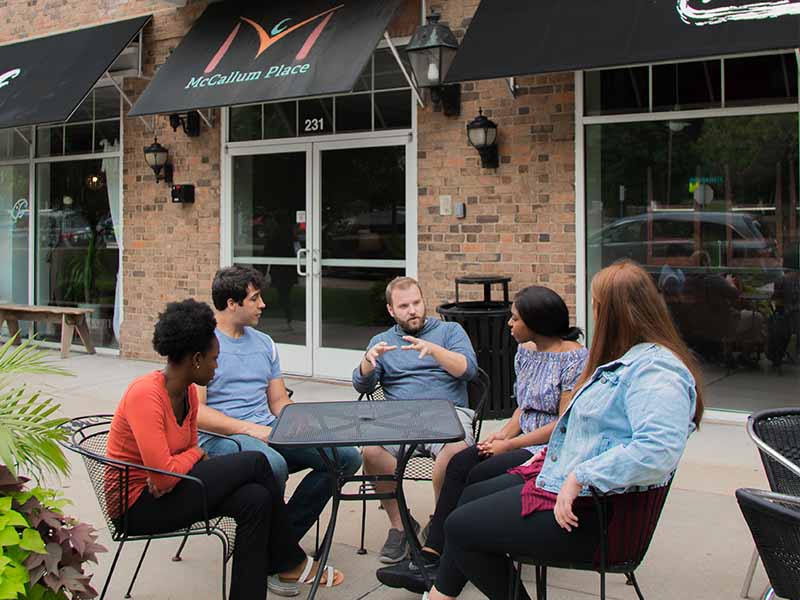Tara DeWitt MS, RDN, LD
Dietitian
If you eat fat, you will become fat. If you eat fried food, you will not only become fat, but will also develop acne. If you eat red meat or eggs, you will develop high cholesterol and die from a heart attack. Although these statements sound unreasonable to most, they are one of the biggest barriers patients with eating disorders must confront on their road to recovery. Food beliefs eliminate foods from the diet of a person suffering from an eating disorder. As a dietitian working with patients with eating disorders, I strive to challenge these messages so they can trust, and eventually, enjoy food again.
Fear foods mean exactly what they sound like, foods that one finds fearful. The specific foods that are feared are very case-dependent; perhaps it was a food associated with trauma, a food that wasn’t “allowed” at home, or was historically a binge food, making it impossible to eat again. An analogy I use when trying to educate a patient’s loved ones about fear foods, is to think of the one thing you are extremely afraid of, and imagine facing the fear 3-6 times each and every day. For example, I am terrified of spiders. If there is a spider in a room I have to enter, someone (NOT me) would have to a) kill the spider, b) remove the spider from said room, or c) demolish the building. Imagine how difficult it would be for me to enter the room, facing the tiny arachnid that has held me back from entering various rooms. Now imagine how difficult it is for a patient to face the thing that held them back from their lives. The supported meals and snacks at McCallum Place is the perfect environment to assist patients with challenging their fear foods, and the post-meal discussion helps them to process their challenges with their peers and meal therapists.
As dietitians, we often assign our patients the “Fear Foods Worksheet” that involves a patient writing out their fear foods on a scale from “safe” to “untouchable.” The meals and snacks provided at McCallum Place often include these fearful foods, and planning out these challenges with a patient can be the first step to confronting their fears. As time goes on and the exposures continue, the fear food slowly loses it’s power over a patient and can be eaten with far less anxiety and fear than it did before.
Another example on how we assist patients in challenging their fear foods is to write down the food, followed by the outcome they anticipate happening if it is consumed, regardless of how irrational it sounds. Let’s refer to my phobia of spiders for an example. My fear statement is: “I am afraid of spiders, if I go into a room with spiders, I will die.” A way for me to challenge my irrational thought would to be to have repetitive exposures that include spending time in a room with a spider, and slowly increase the duration of time spent in that room until I no longer hold the same fear about that specific spider. I quickly realize that I do not die if I walk into a room with a spider, although my anxiety levels may suggest otherwise, I would see that my irrational thoughts were holding me back. In eating disorders, when the fearful outcome of the food does not actually happen, it slowly becomes less scary. A person may be fearful of cookies, but know that they truly enjoy eating cookies. A fear statement could be, “I am afraid of cookies, I will gain 20 pounds if I eat cookies.” A way to challenge the irrational thought would be to include a cookie in that patients meal plan, and have them recognize that one cookie does not cause a 20 pound weight gain, and that it would be physically impossible to actually gain 20 pounds in one day (unless you developed another limb overnight…but I have yet to see that).
Challenging fear foods can be a terrifying process, and one that gets harder before it gets easier. Each patient is unique, which is why the individual treatment we provide at McCallum Place is the perfect environment to confront the fear foods. The sooner this occurs, the sooner food can be enjoyed once again.









